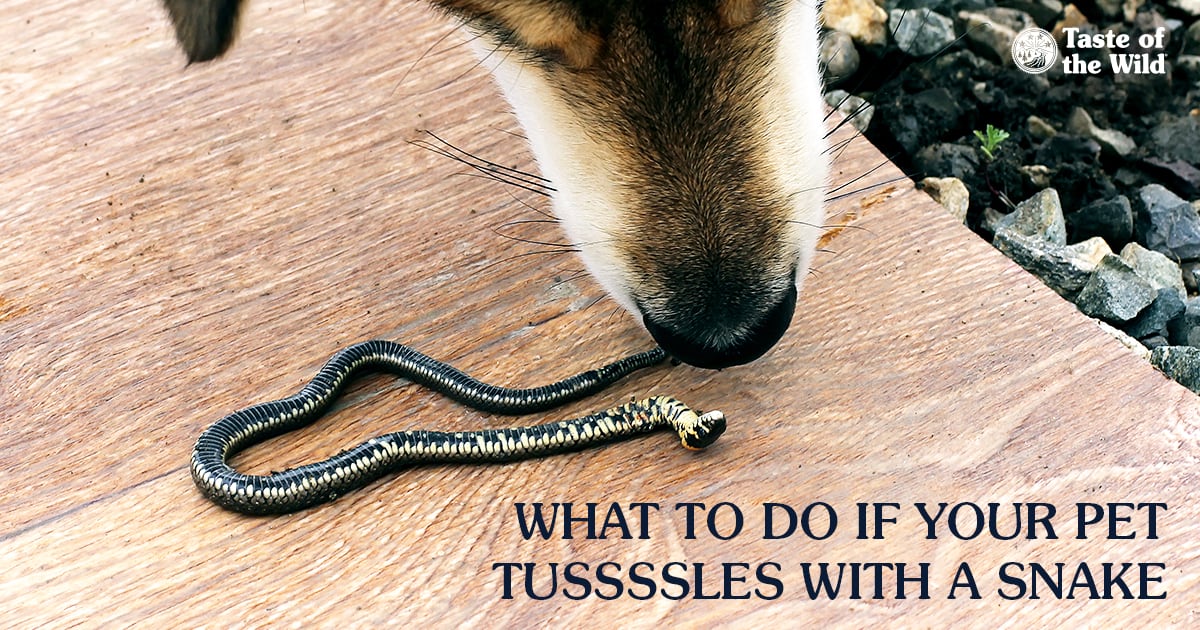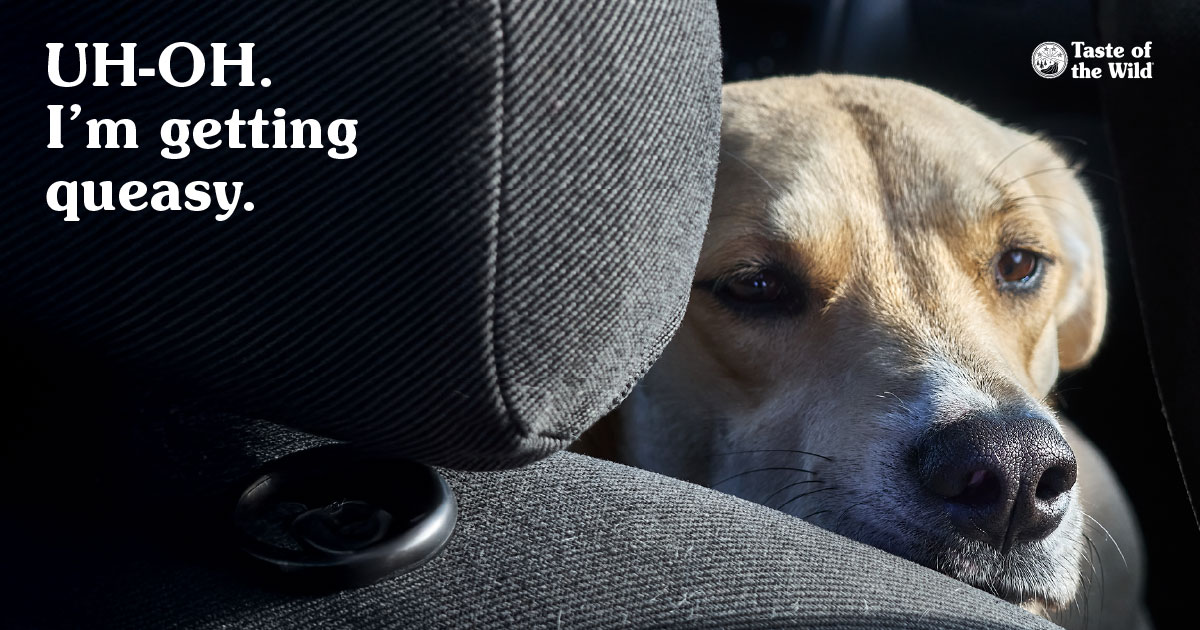Snakes Alive! What to Do About Snake Bites on Dogs
Thursday, September 2, 2021 | Health

Most snakes are happy to go about their business, keeping the local population of pesky rodents and insects under control, but some dogs just can’t leave well enough alone. Just like a bee sting, hopefully it will never happen to your dog, but if it does, this article will help you know what to do if your dog gets bitten by a snake.
Venomous Snakes Do Bite Dogs
About 150,000 dogs and cats are bitten by venomous snakes in the United States each year. In the U.S., snakes that are venomous include rattlesnakes, copperheads, cottonmouths (water moccasins) and coral snakes. If a venomous snake encounters your dog and bites them, it can be a life-threatening medical emergency.
What Does a Snake Bite Look Like on a Dog?
Much like bee stings, a snake bite on a dog’s legs or face is most common. You may or may not see fang marks because swelling around the bite wound can hide them. The severity of the bite depends on a number of factors: the type of snake, the bite site, the size of the dog, how much venom is injected by the fangs and the amount of time between when the bite occurs and when medical treatment is started. Therefore, assume the snake was venomous and immediately seek veterinary care to treat snake bites, even if your dog has received the snake bite vaccine.
Dog Snake Bite Symptoms
Bites from nonvenomous snakes may cause pain, bruising and swelling around the bite site. Puncture wounds (fang marks) may be visible. A nonvenomous snake bite on a dog’s body may become infected; otherwise, for most dogs, swelling resolves in a few days.
The signs of a venomous bite can vary, but may include pronounced swelling, which may spread quickly. Due to this swelling, fang marks may not be obvious. The dog may have severe pain, muscle tremors or respiratory distress (trouble breathing), and may go into shock, which is why immediate veterinary assistance is important.
What to Do If Your Dog Is Bitten by a Snake
- Move yourself and your dog away from the snake immediately. If possible, take a photo of the snake to aid in identification.
- Try to calm your dog and keep them from moving. If you need to get your dog to the car, carry them (if possible); too much movement can increase the spread of venom in the body.
- Remove their collar and muzzle your dog. Dogs that are frightened or in pain may bite, so wrap a bandana or leash around their muzzle to protect yourself.
- Keep the body part with the bite wound at or below the heart. If the snake was venomous, this may help slow the distribution of venom.
- See a veterinarian as soon as possible. Dog snake bites can be a medical emergency. Don’t waste time trying to determine if the snake is venomous or not. If it’s after hours, go to the nearest emergency vet clinic.
What NOT to Do If Your Dog Is Bitten by a Snake
- Don’t try to kill or capture the snake. This could put you at risk of a bite.
- Don’t slice over the bite wounds and try to suck out venom. What may be a good idea in movies is not a good idea in real life.
- Do not apply a tourniquet, pressure bandage or ice pack. While these tactics can help slow the venom from moving to other parts of the body, if the venom is sequestered, it can cause tissue damage.
- Don’t administer any medications. Only give medications under the guidance of a vet.
Treatment for Venomous Snake Bites on Dogs
Hospitalization is often required for snake bites. For venomous bites, like rattlesnake bites, antivenin (antivenom) specific to the type of snake venom injected may be administered intravenously if it’s available — that’s why it’s helpful to have a photo of the offending snake. This treatment can be very expensive, especially for large dogs, and some dogs may have side effects. Pain medications, intravenous fluids, antibiotics to treat an infection and other treatments may also be recommended.
How to Prevent Snake Bites in Dogs
It’s better to try and avoid an emergency trip to the hospital. Take these steps to help prevent your dog from a nonvenomous or venomous snake bite:
- Know the snakes that are common in your region or the area you will be visiting with your dog.
- On hikes, stay on open paths and keep your dog on a leash.
- Avoid off-trail hiking and areas where snakes are commonly found, such as rock formations and high grass.
- Hike during the day (rattlers are nocturnal) or during cooler months when snakes may not be as active.
- Don’t let your dog sniff at dying or injured snakes — they can still bite and inject venom.
- If you live in or are visiting an area where rattlesnakes are common, talk to your vet about the rattlesnake vaccine for dogs. It is approved for use in dogs, however the jury is still out on its efficacy.
Let the Snake Slither Away
If snakes are common in your area, especially venomous ones, ask your veterinarian about snake avoidance training classes that teach your dog how to avoid the smell, sound and sight of snakes. If you do encounter a snake, stop and give it a chance to slither away on its own; most snakes aren’t aggressive and would rather not deal with people or dogs.
The information in this blog has been developed with our veterinarian and is designed to help educate pet parents. If you have questions or concerns about your pet’s health or nutrition, please talk with your veterinarian.




